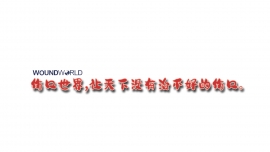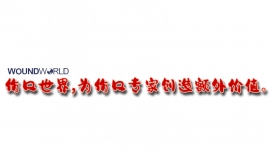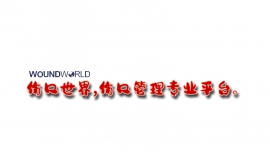文献精选
摘 要
西藏红缨合耳菊(Synotis erythropappa (Bur.et Franch)C. Jeffrey et Y. L. Chen)为菊科(Compositae)植物,属西藏特有植物。产于西藏东南部,西藏当地女性将红缨合耳菊捣碎、烧成灰等后,敷在皮肤表面用于皮肤保养及紫外线防护。黑色素的大量产生是皮肤变黑的重要原因,人体中酪氨酸酶是催化酪氨酸形成多巴,以及多巴形成多巴醌,并最终产生黑色素的关键酶。羟自由基是人体内产生的不稳定的且具有强氧化性的物质,与人体的衰老有密切的联系,氧自由基同样对人体的衰老有密切关系,同时它也在黑色素的形成过程中起到氧化的作用。当自由基大量产生,又得不到有效的清除时,会导致机体组织不断老化。
本文通过研究红缨合耳菊提取物的美白机理,包括红缨合耳菊提取物对酪氨酸酶的抑制作用、B16细胞的影响、自由基清除作用等,探讨了红缨合耳菊在美白方面的功效。取得的结果如下:
一、以酪氨酸为底物,探讨红缨合耳菊提取物酪氨酸酶单酚酶的抑制效果结果表明红缨合耳菊提取物的乙酸乙酯及正丁醇萃取部分有较强的抑制能力,对酪氨酸酶单酚酶的半数抑制浓度IC50分别为57.8、140ug/mL。并能使抑制过程产生延迟作用。
二、以多巴为底物探讨红缨合耳菊提取物酪氨酸酶双酚酶的抑制效果。结果表明红缨合耳菊提取物的乙酸乙酯及正丁醇萃取部分有较强的抑制能力,对双酚酶的半数抑制浓度IC50分别为41.2、59.6ug/mL。通过动力学实验得出抑制类型分别为竞争性抑制以及非竞争性抑制。
三、探讨了红缨合耳菊提取物对B16细胞的影响,结果表明红缨合耳菊提取物对细胞形态和生长均有一定的抑制作用,其中以乙酸乙酯萃取部分最大320ug/mL时细胞生长抑制率可达到65.67%,而正丁醇萃取部分及水溶部分仅为10%左右。
四、红缨合耳菊提取物在抗氧化方面的研究,探讨红缨合耳菊提取物对DPPH和氧自由基的清除作用量。对羟自由基的清除作用在一定程度上可以与抗坏血酸相媲美。乙酸乙酯、正丁醇萃取部分半数清除率IC50分别为2.51、5.12ug/mL与抗坏血酸的ICso值2.42μg/mL相差不多,对氧自由基的半数抑制浓度IC50分为0.27、0.39 mg/mL.
上述实验证明红缨合耳菊提取物具有抑制酪氨酸酶单酚酶及双酚酶的作用对细胞有一定的毒性,此外还具有清除自由基、抗氧化损伤、抗衰老的双重功效有望用于美白护肤和抗衰老型化妆品中。
关键词:红缨合耳菊;酪氨酸酶;B16黑色素瘤细胞;自由基
Abstract
Synotis erythropappa (Bur.et Franch.)C, Jeffrey et Y.L. Chen is Compositae plant, as a natural plant of Tibet. They mainly product in east-nouth of Tibet. The females apple the triturate or ash of them to cure skin disease, Also to avid eultraviolet radiation. As we known, the product of melanin is responsible for the process of skin blackening. Besides, tyrosinase is a key enzyme which can catalyze tyrosine to L-DOPA, and catalyze L-DOPA to dioxyphenylalanine quinine.
Free radicals, a matter produced in vivo, which is close connection with ageing.is instable but powerful in oxidation, If plenty of the free radicals produced with out efficient cleaning, the prganism will be ageing uninterrupt, This paper do some research on the effect of the extract of Synotis erythropappa (Bur. et Franch.)C Jeffrey et Y,L. Chen on the cosmetology,Bl6 cells and antioxygen, From the rsearch of the effect on the inhibition ratio of the tyrosinase and the cleaning of freradicals, we get the following results:
The research of water extract of Synotis erythropappa (Bur. et Franch.)C. Jeffrey et Y.L. Chen on monophenol oxidase of tyrosinase. We discover that the four factions extracted all have inhibitory activities on tyrosinase, inhibitory activity of ethyl acetate and n-butanol fraction are higher than others, concentration that resultsin 50% activity(ICso) lost is 57.8、140 μg/mL, Also they Can extend the lag of the action time of monophenol oxidase.
The research of water extract of Synotis erythropappa (Bur. et Franch.)C Jefrey et Y L. Chen on diphenol oxidase of tyrosinase. We discover that the four fractions extracted all have inhibitory activities on tyrosinase, inhibitory activity of ethyl acetate and n-butanol fraction are higher than others, concentration that resultsin 50% activity(ICso) lost is 41l.2、59.6 μg/mL, The inhibition kinetics analyzed by Hnewaver-Burk plots showed that ethyl acetate faction is a competitive type inhibitor, and the inhibition constants for free enzyme(K¡) was determined to be19.7μg/mL. n-butanol fraction is a uncompetitive type inhibitor, and the inhibition constants for free enzyme(K¡) was determined to be 60.7 μg/mL.
The research of extract from Synotis erythropappa(Bur. et Franch.)C. Jeffrey et Y,L. Chen on Bl6 cells. We discover that the four fractions extracted all have inhibitory activities on B16 cells, inhibitory activity of ethyl acetate fractionare higher than others, ICso is 65.67%.
The research of extract of Synotis erythropappa (Bur. et Franch.) C. Jeffreyet Y, L. Chen on free radicals. We discover that the four fractions extracted all haveinhibitory activities on free radicals, inhibitory activity of ethyl acetate and n-butanol fraction are higher than others, IC50 is 2.51、5.12 g/ml on DPPH and 0.27、0.39mg/mL on oxygen free radicals.
The above-mentioned research demonstrates that Synotis erythropappa (Bur. etFranch,)C, Jeffrey et Y,L. Chen has the effect on skin whitening anf anti-ageing. Soit is promising be used in skin protection cosmetics.
Key word: Synotis erythropappa (Bur. et Franch.)C. Jeffrey et Y. L. Chen; tyrosinase: Bl6 cell; free radicals.
中华医学会医学美容学会激光美容学组,中华医学会皮肤性病学会美容激光学组
[关键词】 皮肤黏膜修复,光声电治疗术后;共识
[中图分类号】 R751.05[文献标识码】Bdoi:10.16761/i.cnki.1000-4963.2019.05.019
[文章编号]1000-4963 2019)05-0319-04
徐学涛1,张:l昆h,杜志云’,郑劭1,方岩雄1,卫星船1,赵肃清1,俞新华2(1.广东工业大学轻工化工学院,广东广州510006;2.华南农业大学生命科学学院,广东广州510642)
摘要目的:研究西藏红缨合耳菊提取物对酪氨酸酶的抑制作用。方法:将红缨合耳菊的70%乙醇提取物依次用石油醚、乙酸乙酯、正丁醇萃取。然后测定各部分对酪氨酸酶的抑制作用,并进行酶抑制动力学研究。结果:乙酸乙酯、正丁醇的萃取部分对酪氨酸酶的活性抑制较强;对单酚酶抑制作用明显并有延迟作用,半数抑制浓度(IC50)分别为57.8、140 pg/ml;对双酚酶的抑制作用显示浓度依赖关系,IC50分别为4I.2、59.6∥lIll,相比熊果苷抑制双酚酶活性的Ic,。值1.44rag/ml,抑制效果分别是熊果苷的35、24倍;抑制类型:乙酸乙酯部分为竞争性抑制,晒为19.7斗g/mJ,正丁醇部分为非竞争性抑制,鼬为60.7t∥ml。结论:西藏红缨合耳菊乙醇提取物的乙酸乙酯、正丁醇萃取部分对酪氨酸酶活性抑制较强。
关键词红缨合耳菊;酪氨酸酶;化妆品
中图分类号:R285.5
文献标识码:A
文章编号:1001掣54(2008)10-1544-04
Inhibition of Extracts from Synotis erythropappa OR Tyrosinase XU Xue·ta01,ZHANG Kunl,DU Zhi—yunl,ZHENG Jie。,FANG Yan.xiong‘,WE/Xing-ehuanl,ZHAO Su.qing。,YU Xin.hna2
(1.Faculty of Chemical Engineering and Light Industry,Guangdong University of Technology,Guangzhou 510006,China;2.College of Life Science,South China Agricultural University,Guangzhou 510642,China)
Abstract
Objectire:To study the inhibition of extracts from Synotis erythropappa On tyrosinase.Methods:The 70%ethanol ex. tracts were extracted by petroleum benzine,ethyl acetate and n-butanol,and the inhibitory activities against tyrosinase of every fraction were determined in vitro and the inhibitory kinetics of ethyl acetate and n-butanol fractions we地investigated.Results:The four fractions extracted all had inhibitory activities on tyrosinase。inhibitory activities of ethyl acetate and n-butanol fraction were higher.Their IC50 were 57.8、140 t,#ml for monophenol oxidase activity and 41.2、59.6 w旷IIll for diphenol oxidase activity,respectively.The inhibition kinetics analyzed by Hnewaver—Bunk plots showed that ethyl acetate fraction was a competitive type inhibitor,and its Ki Was de—termined to be 19.7 pe,/mL n·butanol fraction was an uncompetitive type inhibitor,and its Ki Was determined to be 60.7¨∥m1.Conclusion:Ethyl acetate and n—butanol fractions of extracts from Synotis erythropappa show potential inhibitory activity on tymsinase.
Key words
Synot/s erythropappa(Bur.et France)C.Jeffrey et Y.L Chen;Tyrosinase;Cosmetic
中华医学会医学美容学会激光美容学组,中华医学会皮肤性病学会美容激光学组
[关键词] 皮肤黏膜修复,光声电治疗术后;共识[中图分类号1R751.05[文献标识码]B
文章编号]1000-4963 2019)05-0319-04
doi:10.16761/i.enki.1000-4963.2019.05.019



